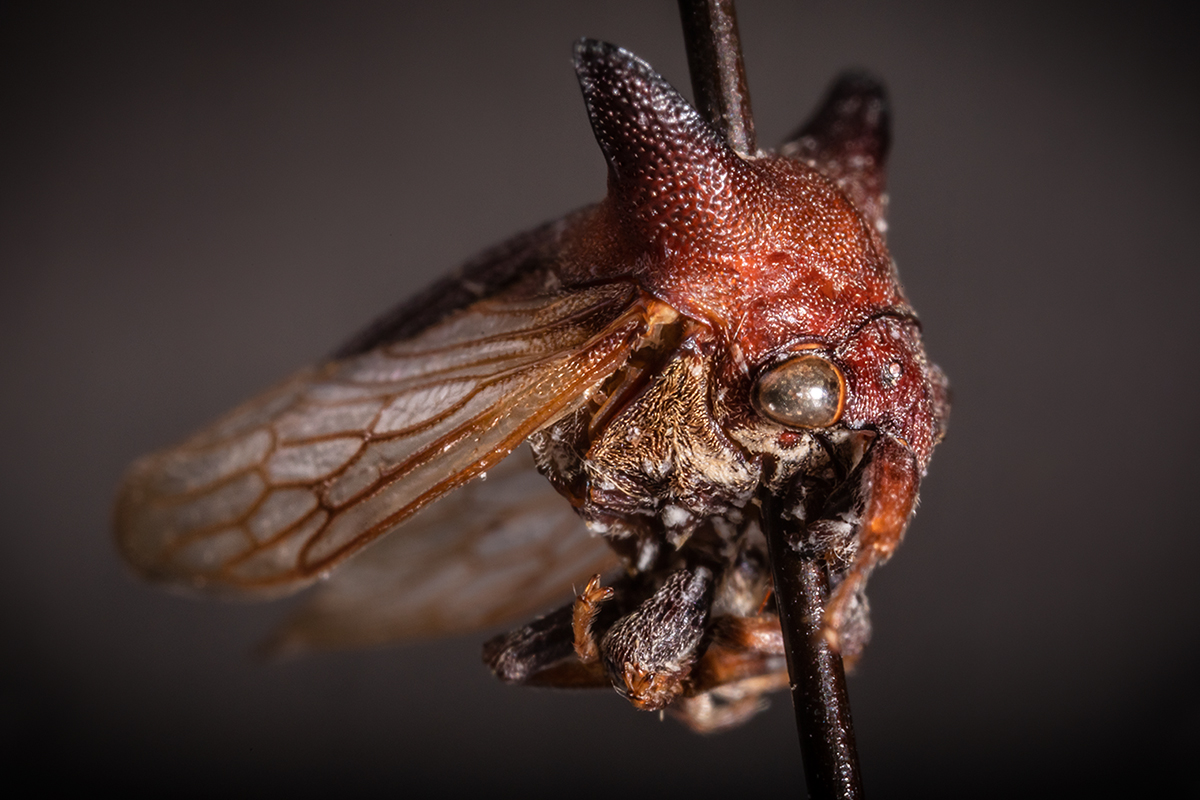Leafhoppers are one of the largest families of plant-feeding insects. There are more leafhopper species worldwide than all species of birds, mammals, reptiles, and amphibians combined. Leafhoppers feed by sucking the sap of vascular plants, and are found almost anywhere such plants occur, from tropical rainforests to arctic tundra. Several leafhopper species are important agricultural pests. Our recent work focuses on the following areas:
- Documenting global diversity of leafhoppers and related Hemiptera. Leafhoppers are one of the 10 largest insect families, with ~23,000 named species but this number probably represents only about 10% of the total diversity of the group. Our lab conducts field work throughout the world to facilitate discovery of new species and provide more complete data on species distributions and ecological associations.
- Reconstructing phylogenetic relationships. Phylogenies provide a crucial framework needed for the study of evolution which, in turn, is needed to understand the ecological processes that generate and maintain biodiversity. A core focus of our lab is on expanding knowledge of the Tree of Life using analyses of molecular and morphological data.
- Providing user-friendly tools for accurate species identification. Accurate species identification is key to most biological research but is difficult for highly diverse but poorly studied groups like insects. Traditionally published dichotomous identification keys, when available at all, include only a fraction of known species and are quickly rendered obsolete by new discoveries, particularly in poorly known groups of insects. Therefore, a major focus of our lab is on developing online interactive keys that are generated automatically from a database that is updated frequently with new data.
- Assessing conservation status of insects in threatened ecosystems. Insects constitute the largest component of terrestrial biodiversity and provide crucial ecosystem services but their conservation status remains poorly understood compared to that of vertebrates and plants. The responses of insects to different kinds of anthropogenic disturbance often differ from those of plants and various vertebrate groups. Therefore, we have developed leafhopper-based habitat quality indices for use in comparison with plant-based indices in tallgrass prairie habitats. We have also used historic species occurrence data from insect collections to infer changes in insect diversity and species composition over time in particular areas including, most recently, the southern dry tropical forest of Mexico.
- Documenting associations between leafhoppers and plant pathogens. Leafhoppers are important vectors of plant pathogens including phytoplasmas, spiroplasmas, viruses and the xylem-borne bacterium Xylella fastidiosa. Some of these microbes cause major losses to agriculture annually. Most research on such plant pathogens focuses specifically on the epidemiology of plant diseases of agricultural importance. We take a more holistic approach, working to document leafhopper-microbe associations in natural areas worldwide in order to create a global database that can be used to identify hotspots of pathogen diversity and predict future disease outbreaks.

